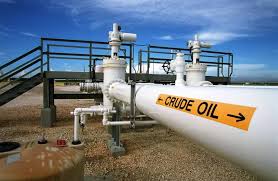Construction of the East African Crude Oil Pipeline (EACOP) has now reached 62 percent completion, with officials confirming that the entire project will be ready by June 2026. This was revealed during a joint inspection carried out by Uganda and Tanzania’s regulatory authorities in the Albertine Graben, Uganda.
Speaking during the inspection, Dr. Joseph Kobusheshe, Director for Environment, Health and Safety at the Petroleum Authority of Uganda (PAU), said the pipeline project is progressing steadily, with key infrastructure already taking shape in preparation for Uganda’s first oil production.
“As of now, we are talking about construction progress of between 60 and 65 percent. We have several key facilities such as Pump Station One already under construction here in Uganda, and the work is moving smoothly,” he said.
Dr. Kobusheshe added that the Tilenga and Kingfisher oil development areas—crucial to oil production—have made impressive strides.
“By the end of this year, we are confident that we shall have the minimum number of wells needed for first oil. The flow lines and feeder lines from Kingfisher and Tilenga are also progressing well. We are also developing Central Processing Facilities (CPFs), which are important in preparing the crude oil before it enters the pipeline,” he explained.
Patrick Aikoa, site lead at AGI Construction, confirmed that construction at Pump Station One, a major component of the 1,443-kilometre pipeline, is at 58 percent completion.
“The project is moving very well. We believe that by June next year, the pipeline will be commissioned,” he noted confidently.
According to project updates, over 1,000 kilometers of line pipes have already arrived in Uganda, shipped from China and Greece. Out of these, 800 kilometers of line pipes have already been insulated and coated, and are ready to be dispatched to different construction areas in Uganda and Tanzania.
On the Tanzanian side, Gerald Maganga, Director of Petroleum at the Energy and Water Utilities Regulatory Authority (EWURA), noted that work is progressing at an even faster pace.
“In Tanzania, the pipeline is longer, so most of the concentration is on our side. We are happy with the progress we are seeing, and our aim is to ensure the entire project stays on track for completion,” he said.
In Uganda, the drilling of oil wells at the Tilenga and Kingfisher sites has also been making significant progress. Yusuf Masaba, Corporate Affairs Officer at the Petroleum Authority of Uganda, confirmed that 18 out of 31 planned wells have been drilled at the Kingfisher oilfield.
“These 18 wells are enough to meet the minimum requirement for the first phase of oil production. The Kingfisher feeder pipeline is now complete and will deliver crude oil to Pump Station One,” Masaba said. He also added that the Kingfisher Central Processing Facility (CPF) is 65 percent complete.
Derrick Mbabazi, the National Content Manager for CCJV, which is responsible for constructing the CPF at Kingfisher oilfield in Kikuube District, highlighted the job opportunities created by the project.
“Since 2022, over 2,000 local Ugandans have been employed on the EPC 3 project and other contract roles. We are proud that the project is not only about oil but also about empowering local communities,” Mbabazi said.
The inspection team also visited Kabalega International Airport in Hoima District and the Kingfisher oilfield in Buhuka, further confirming the extensive infrastructure under development to support oil production and transport.
The EACOP project, valued at over $4 billion, will transport crude oil from Lake Albert in Uganda to Tanga Port in Tanzania, where it will be exported to international markets. The project is one of Africa’s most ambitious energy infrastructure developments and is expected to transform Uganda into an oil-producing country by mid-2026.
